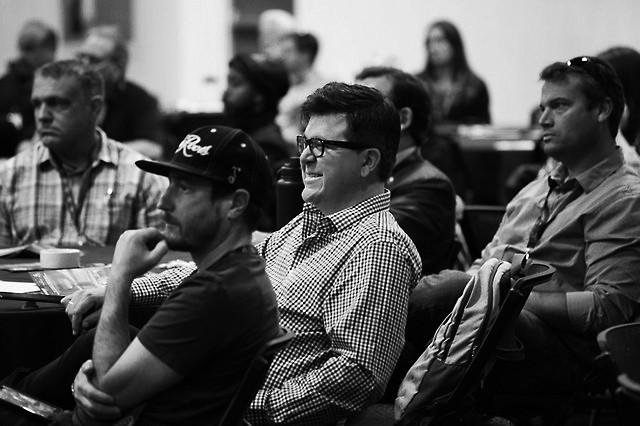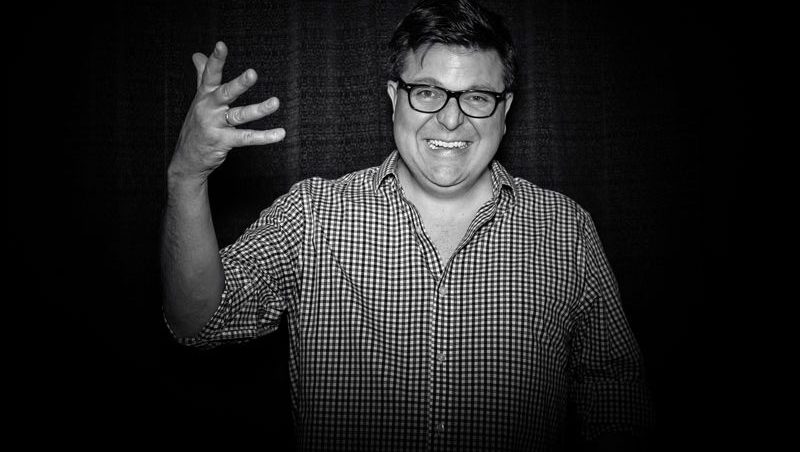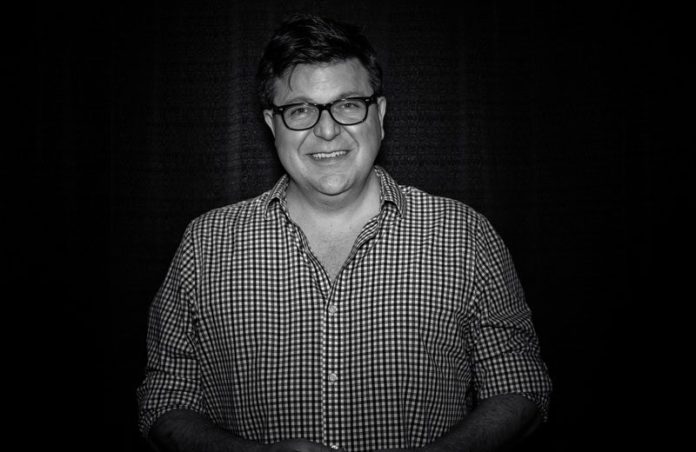Ricardo Baca has been chronicling the industry since founding The Cannabist in 2013. Now he’s reinventing himself with the Grasslands content agency.
It’s a dream come true for a journalist to be at ground zero when a massive quasi-legal underground movement evolves into an emergent billion-dollar industry in, arguably, the largest national market on Earth. That’s an epic event rarer than a perfect storm—and, at the fertile, churning epicenter, Ricardo Baca was appointed editor-in-chief of The Denver Post’s groundbreaking blog, The Cannabist. The blog debuted in 2013, and America’s first legal recreational market was getting ready to hit on New Year’s Day 2014.
With a crew of straight-laced reporters and cannabis-culture content creators, Baca posted news stories that helped define the wild, untamed space. They brought old-school journalistic credibility, even as journalism was experiencing its own transition in turbulent post-digital times. The 2015 documentary Rolling Papers followed Baca and staff as they documented the revolution. Topics covered (and discovered) by The Cannabist brought issues to light with legal and legislative developments, regulations for testing and accurate labeling, the efficacy of CBD treatment for young patients, parenting and pot, and every other aspect of all things marijuana.
Now, after leaving his position at The Cannabist, Baca has arrived in the Grasslands—the content agency he founded this year—which offers a new-media approach to cannabis marketing and branding. That includes “social media, publicity, marketing, thought leadership, and anything involving the written word,” Baca said. Clients include Whoopi & Maya, Bloom Farms, Hoban Law Group, and the Organic Cannabis Association, among others.
“I’ve said this before, and I truly believe it: Microdosing is the future of cannabis.”
In the field, he’s become a recognized thought leader, sourced by and discoursed with by heavyweights like The New York Times, Poynter, The View, The Colbert Report, This Week With George Stephanopoulos, Buzzfeed, The Guardian, Esquire, Fast Company, Al Jazeera, BBC, Mashable, International Business Times, and Canadian Broadcasting Company, to name a few. He’s also working on a book with Harborside Health Center’s legendary founder Steve DeAngelo and writing a regular column for The Daily Beast, in addition to other freelancing.
Not bad for a hometown reporter from Denver. From where he stands today, the horizon is unlimited, so we picked Baca’s brain about what may be coming for cannabis.
mg: What influential events or trends may be coming in 2018?
Ricardo Baca: I’m going to be hopeful here and say 2018 will be the year we begin to figure out social cannabis consumption. Personally, I find it embarrassing that Colorado and other states are still botching this aspect of legalization. Most states have figured out growing at home and commercial cultivation. Most recreational localities have a reasonable infrastructure of dispensaries and shops. But what do state regulators think happens to these cannabis products after a customer makes a purchase?
Cannabis consumers deserve spaces to consume, and yet private homes are generally the only places that are fully legal in these states, early adopters Colorado and Washington included. That this is still our reality more than five years after voters in both states said “yes” to legalization speaks to the ridiculousness of this situation, especially since the prohibitionist federal government admits cannabis causes zero deaths in America each year, while alcohol, a recreationally available substance served in most bars, clubs, and restaurants, kills nearly 40,000 Americans annually.
I’m guessing this most recent batch of legal states will be the first to figure social use out. If it’s not Nevada, it will be California. And once other states see cannabis lounges or dispensary-adjacent tasting rooms aren’t the end of the world, they’ll fall in line.

I’ve said this before, and I truly believe it: Microdosing is the future of cannabis. Most states are saying a single dose of edible marijuana contains 10mg of activated THC, but I think that’s too much for an adult-use market. I love that we’re finally starting to see large cannabis brands manufacturing edibles that are 2.5mg or even 5mg apiece. Not only does that serve new consumers more responsibly, but it also allows those of us with higher tolerances to more accurately target our ideal dose.
When do you think federal cannabis prohibition will end?
If we look back to the 2016 election as a tipping point, many predicted Election Day was going to change everything for cannabis—most importantly, its federal legality. Between the wins in California and on the East Coast, pundits wondered if that was enough to change how cannabis is scheduled and treated. But here we are more than a year later, and nothing has changed at the federal level.
I believe we’ll see movement on marijuana’s legal standing by 2025. If state governments move at a turtle’s pace, the federal government more closely resembles a snail—especially on an issue that involves them acknowledging how wrong they’ve been for so long.
California’s recreational rollout is happening in January. What are some takeaways from Colorado’s experience?
One of the biggest looming issues in California involves the small growers. They’ve been cultivating plants on these farms for decades with little regulation, but that’s about to change in a big way. Some are doing their best to comply with strict state regs and others are ignoring them, hoping to operate under the radar. But the state’s marijuana czar, Lori Ajax, is about to implement a system that will make order out of the existing chaos—and likely shut down a lot of noncompliant farms in the process.
The implementation of mandatory cannabis testing will also be a shock for the California industry. Even though growers and retailers in Colorado and Oregon saw testing in the regs, the implementation of testing for potency, contaminants, residual solvents, and pesticides revealed glaring issues in these supply chains and crippled entire market segments. Just look at what happened to the Oregon concentrates market after strict limits became the law of the land, and imagine what will happen in a state like California, which has ten times the population.
You left a prestigious position as America’s first weed editor at The Cannabist. What made you want to get into marketing, and how do you hope to influence the message for cannabis?
When I resigned from The Cannabist in December 2016, I was psyched about leaving my colleagues in a position to succeed. We had just overtaken Marijuana.com in digital traffic, and we were regularly battling it out with High Times’ online readership, too—not bad for a three-year-old site. Even though The Cannabist was still young, I’d been at The Denver Post for fifteen years, and so it really was time for the next stage of my professional life.
I’d never worked outside of daily newspapers, so the jump was thrilling. And while many people are freaking out about cannabis journalists leaving news organizations to work with the industry, this is actually a normal trajectory for writers. Going into the industry you’ve been covering has been happening for decades, especially as newspapers are struggling economically.
But I’ve always been someone who was never fully sated with journalism alone. When I first started at The Denver Post, I helped a colleague create a SXSW-style music festival called The UMS. As I watched Pitchfork become a household name, I knew Denver needed its own music blog and created a platform called Reverb. When Post editors were looking for someone to lead the paper’s cannabis coverage and create a standalone news-and-culture vertical, they asked me if I was up to the challenge. I most definitely was.
In the three years I worked the cannabis beat, I witnessed first-hand an industry trying to legitimize itself—coming out of the shadows and creating relationships with the public, the government, and the media. Many of these companies weren’t prepared for such scrutiny, and those relationships suffered accordingly. My job required me to keep in touch with these entrepreneurs on every level, from their websites to the social media to the press releases and the interviews they’d grant me, and I almost always found myself thinking they needed a professional helping them with this important work.

And that’s what Grasslands is. We’re a journalism-minded content agency that helps businesses where they need it most. We manage their important relationships with the media, and our vast experience on the other side of the inbox informs everything we do.
It helps that all of our employees are journalists. Emily Gray Brosious was the lead cannabis writer at the Chicago Sun-Times until July. Previous to her joining Grasslands, Nora Olabi was the editor of a community news website in Houston. All of us have journalism degrees. That, in addition to our thirty-plus years of combined experience in newsrooms, informs everything we do.
At The Cannabist, were there moments that were especially meaningful for you or felt historic?
I’ll start with the meaningful. Back in 2013, when I first was appointed as the Post’s marijuana editor, we were trying to figure out what we were about to create, what it was going to be called, looking at social handles and available URLs, making up words like “cannabist” and trying to figure out what was going to be right.
In the process of doing that, I also made an effort to get to know all the major players on both sides of the conversation. I was meeting with anti-legalization folks, as well as the pro-legalization people, the people who had passed decriminalization in Denver and medical in Denver and medical statewide and recreational statewide.
So, one of those meetings was with an activist named Mason Tvert, who until recently was the communications director for Marijuana Policy Project. He was a very big driving force behind Amendment 64 [in Denver], and in every interview he would talk about how marijuana was safer than alcohol. I was brand-new to the beat, was figuring this all out by myself, and I’m also a product of the [19]70s and ’80s. I was in elementary school when Nancy Reagan was making the “Just Say No” push, and I believed what I was told.
Even as a mid-thirties adult in Colorado, entering the legal era, to hear Mason say marijuana was safer than alcohol, I wasn’t sure I believed it, especially as a journalist who needed to confirm everything before repeating it or writing it in the newspaper. So, before meeting him, I made a point to do some research, just looking into it, and I was like, “I wonder if I can actually figure this out…” That research only took me ten minutes to find evidence and statistics on federal websites that talk about how deadly alcohol is. We lose almost 40,000 people to alcohol every year—and the federal government was acknowledging even back then that cannabis is non-lethal. We don’t lose people to cannabis. Instantly, the light bulb went on in my head.
It was a personally meaningful moment for me and sparked this light bulb inside me that I had been lied to throughout my entire life by the federal government, my principals, teachers, mentors, and parents, and I was just broken about that because I like to trust people. It made me all the more steadfast to move forward, do the research and, ideally, spread quality information so people didn’t have to put up with bullshit misinformation anymore. So, I’ve always thanked Mason for that.
Historic moments along that path led to the convergence of journalism and science. It was early on when I realized that not all edibles were created the same. Some 10mg pieces of chocolate made me feel a certain way, while other 10mg gummies made me feel another way; much stronger. So, that spurred me to buy a bunch of edibles and take them to a lab and have them tested for potency. At the time, Colorado had regs that said, “Yes, we will test marijuana all the time for potency,” but that had yet to be implemented because the state was figuring out with the private labs how they were going to do that.
As they were figuring out how to do that, I took all the edibles to the lab and had them tested, and we were able to show these edibles were wildly inconsistent. Some were stronger than they said they were going to be, some were not as strong as they said they were supposed to be, and one brand was completely ripping off customers.
When we did that piece on the cover of the Sunday Denver Post, showing that you couldn’t rely on the milligram counts on the labels of these marijuana products, that immediately put the impetus on the industry to get that right and on the government to regulate [potency].
I was glad that with science being a fact-based entity, I could employ science to help this industry mature and to hold the regulators accountable to their initial goals of being able to test these products for potency, as well as contaminants, residual solvents, and pesticides.









